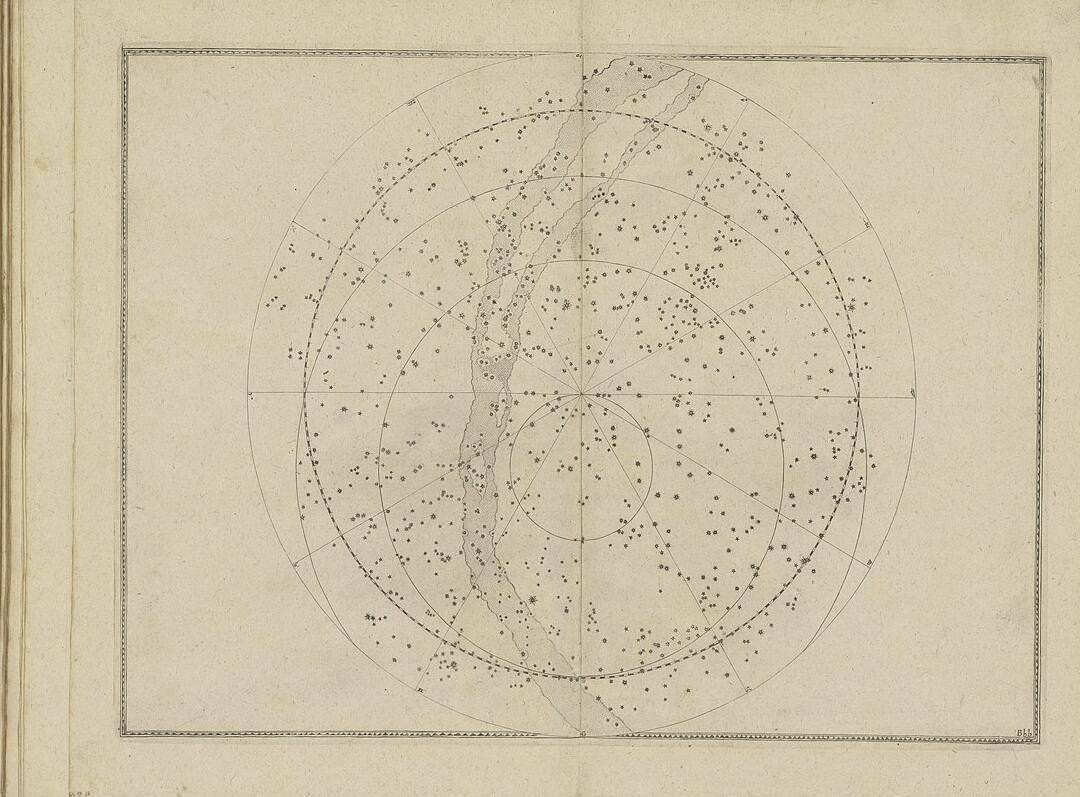Astronomy is rightfully recognized as one of the most ancient fields of study, with a history that spans over 6000 years. The earliest references to celestial bodies can be found in the “Pyramid Texts”, a religious monument believed to date back to around the 25th-23rd century BC. Additionally, rock paintings and megaliths from the late Neolithic era provide additional insights into the knowledge of our ancestors regarding celestial bodies.
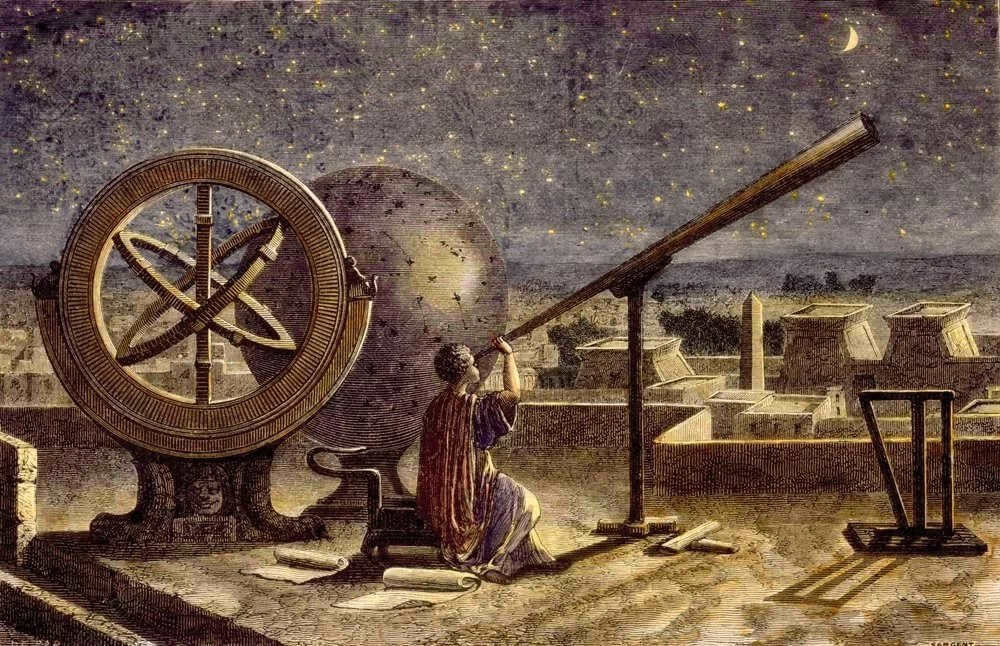
Ancient civilizations were already aware of certain patterns related to the motion of celestial bodies. They observed the phases of the Moon, the regular changes between day and night, and the changing seasons. The stability and regularity of these cycles led to the development of calendars and units of time. Additionally, ancient astronomers noticed that although the celestial bodies appeared motionless, they actually moved across the sky, leading to the understanding of seasonal changes. As time went on, the movements of celestial bodies became associated with events in the world, such as wars, crop failures, and diseases. This eventually gave rise to the field of astronomy and the development of astrology as a science.
One of the most significant discoveries in ancient times was the gnomon, a perpendicular pole used to measure the approximate time of day based on the length of its shadow.
Sumerian-Babylonian astronomy
The priests of ancient Sumer and Babylon were among the first to create comprehensive astronomical tables. In the 2nd millennium BC, they developed the initial lunar calendar, which underwent continuous improvement over the next thousand years. These priests also successfully calculated the length of the solar year, dividing it into 12 months and 365 days. By analyzing tables of celestial observations, they made significant advancements in predicting eclipses and discovering various astronomical laws.
According to numerous scholars, the origin of the conventional seven-day week can be traced back to Babylon. In this ancient civilization, each day of the week was associated with a specific planet.
The Astronomy of Ancient Egypt
The priests of ancient Egypt, while not credited with many original astronomical findings, relied heavily on the advancements made by their counterparts in Babylon and Sumeria. They also advocated for the idea of geocentrism. However, they possessed knowledge of approximately 45 constellations and were the first to ascertain that Mercury and Venus orbited around the Sun.
Ancient China’s Contribution to Astronomy
Out of all the ancient civilizations, China was at the forefront of astronomical advancements. As early as the end of the 3rd millennium BC, the Chinese emperors had established positions for court astronomers. These experts meticulously calculated the length of the calendar year to be 365.25 days, a remarkable feat. In fact, it was during the 12th century BC that the first observatories were constructed in China, highlighting their commitment to studying the celestial bodies.

If you need assistance, don’t hesitate to reach out to your teachers

Stargazing has practical value as it elevates us beyond our own existence; it has practical value as it evokes a sense of grandeur; it has practical value as it is aesthetically pleasing. It is what reveals to us the minuteness of humanity in physical form and the magnitude of our spirit.
Henri Poincaré
What is the definition of astronomy?
Astronomy is a scientific field that focuses on exploring the universe, including its motion, order, and structure. It also involves the investigation of the origin and evolution of celestial bodies and systems. In simpler terms, astronomy is the study of space, planets, and other celestial objects.
The principles of astronomy are grounded in the careful observation and examination of the surrounding cosmos.

The Origins of Astronomy
Astronomy, as a concept, first emerged in ancient Greece during the time of Pythagoras and Aristotle’s exploration of the cosmos.
It is widely believed that the term “astronomy” originated from the combination of two ancient Greek words: “astrom” meaning star and “nomos” meaning law. Thus, the translation can be interpreted as “stellar law” or “law of the stars.”
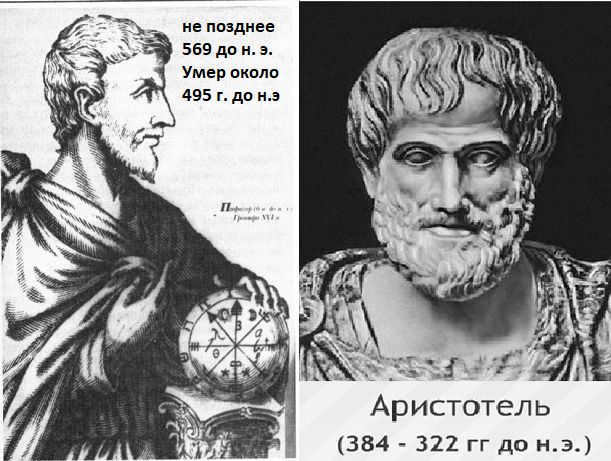
The Scope of Astronomy
Astronomy encompasses the study of the entire cosmos. This includes a wide range of objects and systems.
One may wonder, what exactly are the entities and phenomena that fall under the purview of astronomy? Naturally, this includes stars, planets, meteors, and comets. Additionally, astronomy focuses on the study of galaxies, nebulae, and all other celestial bodies and phenomena present in outer space.
In simple terms, the vast expanse of the universe is the primary subject of astronomy.
When did the field of science emerge?
In actuality, astronomy emerged prior to other scientific disciplines. In fact, it is one of the oldest fields of study.
While it is difficult to pinpoint an exact date for the formation of astronomy, it can be traced back to ancient times. Approximately during the III-II centuries BC.
The need to explore the world around us arose from our ancestors’ need for survival. This need was primarily linked to their ability to navigate in different terrains. Additionally, the principles of agriculture were developed through observation. Even in those ancient times, people had already begun to track time. This knowledge was applied to various aspects of human life, ranging from basic necessities like food and clothing to expanding their horizons and satisfying their curiosity.

Many people believe that the scientist Hipparchus is the founder of science. This is because he was one of the first to calculate and describe the motion of the sun and moon. Additionally, Hipparchus introduced a classification system for stars based on their brightness, which is still used today.
Just like any other scientific discipline, astronomy has its own set of goals and objectives.
There are three main tasks that distinguish astronomy:
1) investigating the positions and movements of celestial bodies, as well as determining their shapes and sizes;
2) exploring the structure and composition of celestial bodies;
3) studying the formation, evolution, and future of celestial bodies.
In the past, astronomy relied more on philosophical perspectives. However, with the advancements in technology, it has become a more precise and accurate science. Nowadays, astronomy is closely intertwined with mathematics, physics, chemistry, and biology. Philosophy still plays a significant role in the fundamentals of astronomy.
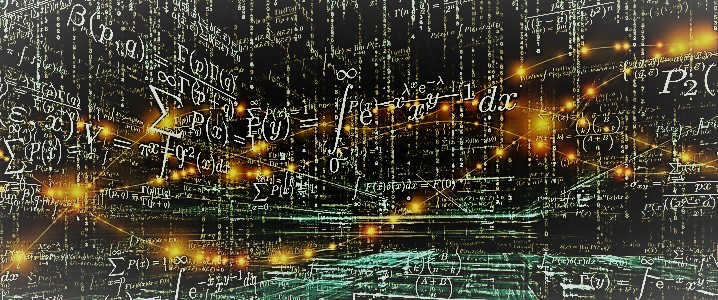
The main objective of astronomy revolves around comprehending the universe and unraveling its mysteries. This scientific discipline is dedicated to exploring and investigating various cosmic phenomena and celestial objects. By delving into the essence of the cosmos, scientists strive to unveil its structure and distinctive characteristics. Humanity yearns to fathom the enigmas and secrets of the universe, aspiring to comprehend its origins and speculate about its future. Ultimately, the pursuit of truth and an accurate portrayal of the world motivate individuals to delve deeper into the realm of astronomy.
Thanks to the field of astronomy, we have already gained a considerable amount of knowledge. Looking ahead, it is evident that there are numerous discoveries and advancements awaiting us. As humanity continues to make progress, science will undoubtedly keep evolving and expanding.
With this in mind, I bid you farewell until we meet again!
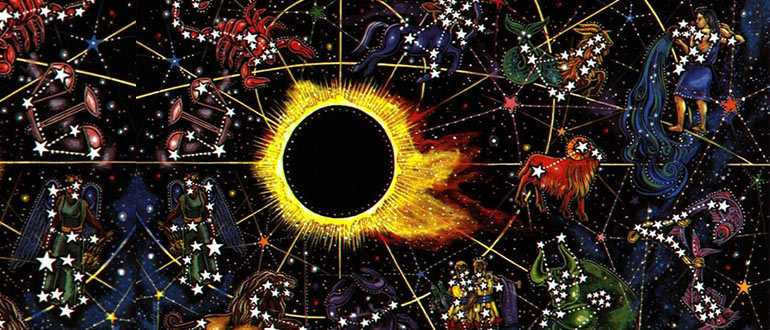
Theory
Hello, esteemed reader. Astronomy has made a comeback in educational institutions, can you fathom that? This field of study had struggled to gain a foothold in secondary education for quite some time, leaving numerous individuals, both young and old, oblivious to the planets within our solar system! Today, I shall expound upon the nature of astronomy and its historical origins. Therefore!
In ancient times, humans had a curious nature that led them to explore both above and below. Those who looked downward discovered the foundations of physics, architecture, and other practical sciences.
Meanwhile, those who gazed upward observed the movement of stars, witnessing the disappearance of old ones and the appearance of new ones. The night sky held a certain magic, aiding in navigation and timekeeping.
Astronomy, one of the oldest sciences, originated from the necessity of landmarks for those who rarely ventured beyond their villages. The development of calendars was essential for timekeeping, crop planting, and religious rituals. The earliest recorded mention of stellar science dates back to the 9th millennium BC.
In essence, astronomy is the study of the entire universe. Initially, astronomers focused on stars, but later expanded their knowledge to include the planets of our solar system and their moons.
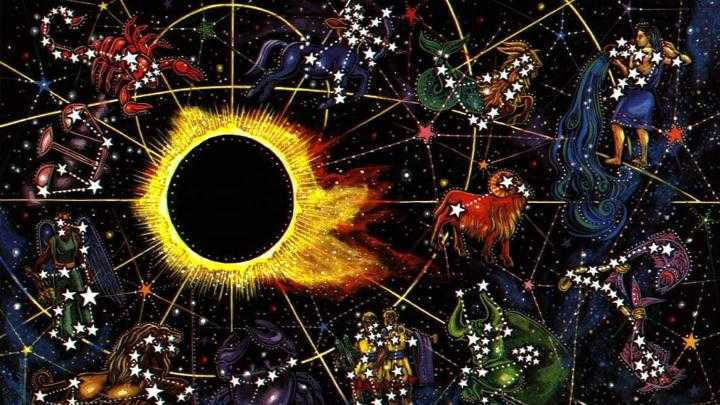
As time has progressed, new discoveries such as black holes, nebulae, and interstellar space have been made in the field of astronomy. Today, there are hundreds of specialized areas within the field, but the term “astronomer” still remains relevant. Even the average person appreciates having a common name for this profession.
However, what sets astronomy apart from astrology? Why is astronomy considered cool while astrology is often associated with charlatans? Throughout history, people have always sought to bring more predictability to their world.
Deities, faiths, fortune-telling … and one fateful moment determined that the celestial entities must exert an influence on human destiny. Such is the essence of astrology – it computes the manner in which the stars and planets shape our fate. Concrete evidence validating the veracity of this discipline remains elusive, rendering it a matter of devout belief. And belief, being a product of the mind, possesses a tangible essence.
Ancient Astronomy: Exploring the Celestial Wonders
Doesn’t it sound like an intriguing topic for a research paper or a captivating presentation? Back in ancient times, the realm of science was not as abstract as it is today. Observing the world around them, people noticed the continuous cycle of day and night, the ever-changing phases of the moon, and its undeniable influence on the Earth’s tides and seasons.
These phenomena, which might seem ordinary to us, required keen observation, recognition, and a collective understanding. Early civilizations began assigning names to the concepts of day and night, divvying up the hours into a twenty-four cycle, and marking the passing of time with months and years. Though these divisions were only approximate, they played a crucial role in laying the foundation for the advancement of scientific knowledge.
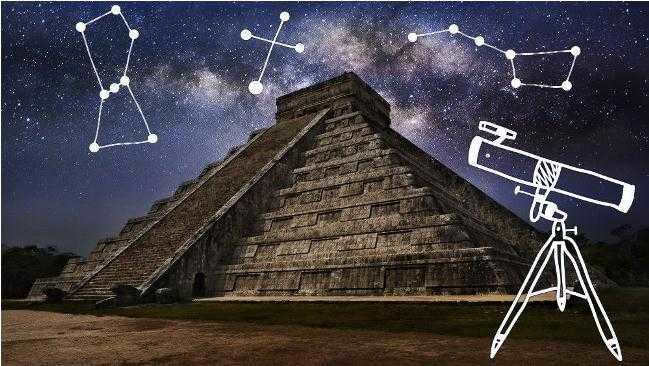
Simultaneously, astrology emerged. Take a look at the outcome. An individual observes the celestial sphere. It is adorned with stars that remain motionless or predictably alter their positions from night to night. Additionally, new celestial bodies emerge.
Several “stars” traverse the sky in a distinct manner compared to others. Some materialize and fade away. Why did the ancient deities decide to render certain stars permanent while others fluctuate? This comet must be conveying a message to us. Even today, comets serve as an omen of either misfortune or unprecedented happiness for numerous individuals.
The telescope was yet to be developed, but individuals utilized simple measuring devices employed by land surveyors. Subsequently, they invented sundials and other methods of measuring time and days.
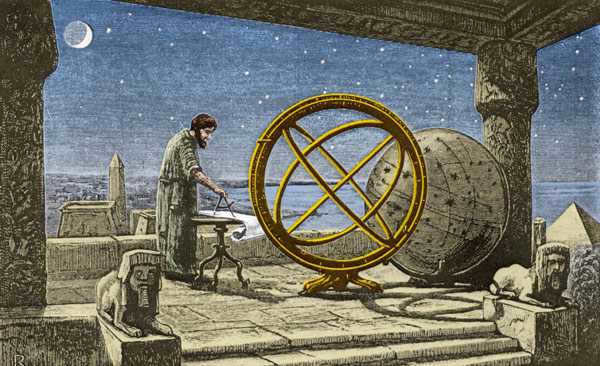
Astronomical discoveries have been made by every ancient civilization, ranging from China to Egypt. Many of these civilizations reached similar conclusions around the same time, making it difficult to attribute any specific discovery to a single civilization.
However, the Babylonians stand out as they were the inventors of the 7-day week, a system that is still in use today. Although the length of their year did not correspond to the modern year, other civilizations such as the Chinese and Egyptians also came close to approximating the correct figure.
Middle Ages
The Middle Ages saw the transition from the inquisitive Greeks, Romans, and Egyptians to the arrival of barbarians and Muslims, which ultimately led to a decline in scientific progress.
In Europe, the influence of religion had a detrimental effect on scientific advancements. However, human curiosity could not be completely stifled. Despite the restrictions imposed by the church, there were still individuals who pursued research and scholarship. These individuals were compelled to adapt their observations to align with the church’s perspective, which hindered progress but did not completely halt it.
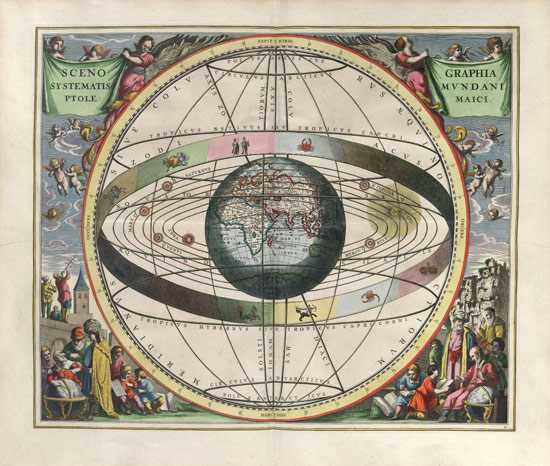

The Islamic nations had a unique advantage due to their favorable geographical location, which not only isolated Europe from ancient civilizations but also allowed them to become the inheritors of these civilizations.
In the beginning, the Islamic world translated the works of Greek, Egyptian, Hindu, and other ancient civilizations into Arabic. They then built upon this knowledge to develop their own advancements in mathematics, physics, astronomy, and other fields.
We owe the Arabs for establishing the first observatories, creating the first system of astronomical constants and instruments. Their calculations of distances and tilt angles were highly accurate, even though they may have had limited significance for the average person. Nevertheless, this data continued to be used well into the Modern Age.
The Renaissance emerged as a replacement for the period of decline, and it brought forth advancements in various fields such as art, science, and particularly, astronomy. Notable figures like Copernicus and Galileo thrived during this era of enlightenment. The focus of scientific exploration shifted from the Arab world back to Europe.
Copernicus revolutionized the understanding of the solar system by proposing a model with the Sun at its center. Although his system contained several errors and inaccuracies, its simplicity and clear concept marked a significant breakthrough. Galileo, recognizing the potential of Copernicus’s ideas, went on to invent the world’s first telescope in order to prove and explore these speculations.
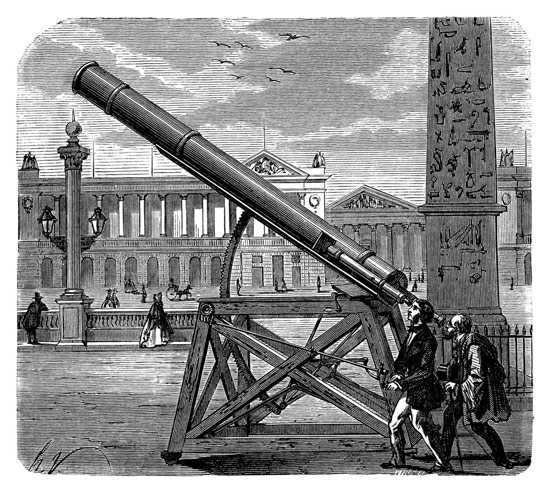
The discovery of planets, stars, and satellites occurred during this time period. Galileo made groundbreaking observations, such as mapping the Moon’s topography and studying Saturn. Some of his ideas were accepted by the Church, which had immense power at the time, while others were rejected. However, this did not hinder the progress of science.
Simultaneously, another prominent astronomer, Kepler, was conducting his own research. In fact, one of the largest telescopes is named after him. Kepler formulated two laws. The first law stated that planets orbit the sun in an elliptical path, rather than a circular one. The second law stated that the speed of planets changes as they move along their elliptical orbits. Additionally, Kepler developed formulas for calculating the distance between planets and the sun, as well as the speed of a planet’s rotation.
These individuals are the giants of astronomy, and numerous individuals contributed to their groundbreaking discoveries. For instance, Saturn’s rings, satellites, and physical characteristics of planets and stars were all discerned through the collaborative efforts of hundreds of researchers. It is worth mentioning Sir Isaac Newton, who not only formulated the laws of physics but also uncovered the law of universal gravitation.
Another notable figure in the field is Edmond Halley, who dedicated himself to the study of comets. In fact, a comet that bears his name, Halley’s comet, frequently captures attention both in news headlines and in the night sky. Interestingly, it was during this period that the Greenwich Observatory was established.
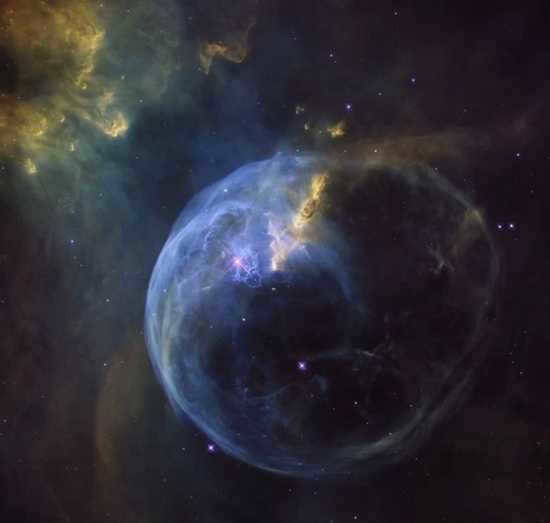
The 18th century marked the conclusion of this era. It was during this time that advancements were made in telescopes and other astronomical equipment, leading to refined calculations and improved figures. Philosophers also started putting forth theories about the origins of the Earth and the universe. These theories were supported by the evidence that was gathered from earlier hypotheses.
In the 18th century, scientists harnessed the advancements of the era to construct observatories, including those in the southern hemisphere. These facilities allowed for the study of stars not only through visual observation, but also through the analysis of their photometric properties. By utilizing infrared radiation and examining the spectra obtained, researchers were able to discern the composition of the Sun and other celestial bodies. Spectral analysis proved to be instrumental in advancing these scientific investigations.
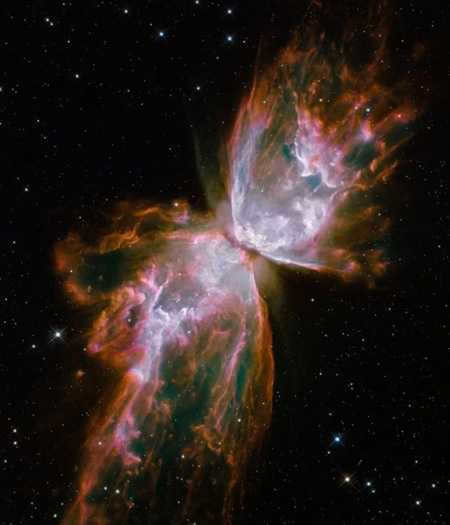
In the 19th century, astronomers came to the realization that the vast field of astronomy could not be fully explored by a single individual. As a result, various sub-branches began to emerge. One notable example is the study of meteors, which became a separate field of research.
During this time, astronomers were able to calculate and determine the existence of all nine planets in the solar system, as well as the asteroid belt that should have been present according to calculations but was inexplicably absent in reality.
Furthermore, the advent of photography revolutionized the field of astronomy. Now, astronomers had the ability to not only capture significant celestial events but also document stars, satellites, and other phenomena. These photographs were invaluable, as they could be used by countless scientists for their own research and observations.
One of the remarkable findings of the 19th century was the establishment of global time zones. Additionally, the field of astronomy transitioned from being solely based in observatories to utilizing notebooks, resulting in the emergence of astrophysics.

In the Renaissance era, astronomers would formulate various theories on paper and subsequently verify or debunk them through observations. However, the field of astronomy has evolved significantly since then. Nowadays, computers have the capability to capture images of the projected celestial locations, rendering it unnecessary for individuals to physically venture out into space. Instead, astronomers can analyze these images from the comfort of their laptops.
This is the pinnacle of astronomy. If we were to summarize the entire 21st century, the current era would be even more fruitful. However, at present, the 20th century stands as the period of greatest advancement in the field of astronomy.
The century commenced with the determination of the precise velocity of light in 1902. Hooray, now we can refine the distances to the planets and validate the existing data. Shortly thereafter, the magnetic field beyond Earth was discovered, and a theory on the structure of stars was proposed.

Astronomers of the past focused on studying stars and planets, analyzing their atmospheres, calculating the mass of the universe, and theorizing about its shape. There was always plenty of work to be done in the field. However, everything changed in 1957 with the launch of the first artificial satellite. At that point, scientists split into two groups: some continued their exploration of the universe, while others turned their attention to the study of humans.
In 1961, mankind took a giant leap into space and never looked back. Spaceships were sent to explore Venus, Mars, and even beyond. Of course, the Moon was not forgotten. The solar system transformed from being merely an intriguing subject to a potentially beneficial realm for humanity.
The scientists believed that with a little more progress, it would become possible to send a human to Mars, establish a colony there, and bring back valuable minerals to Earth. They even imagined the possibility of taking weekend trips to the Moon for leisurely walks. Unfortunately, these ideas have yet to become a reality. After a period of rapid development, progress has slowed down.
The 21st century
Despite Elon Musk’s promises, humans have not yet reached Mars. However, we can remain hopeful. Currently, we have the capability to send shuttles to Mars, and satellites are being launched on a daily basis. In fact, there are now as many satellites in Mars’ atmosphere as there were in Earth’s atmosphere during the 1970s.

Hawking conducted groundbreaking calculations and proposed innovative ideas, which were subsequently confirmed by scientific instruments. As a result, the field of astronomy found itself straddling the line between applied science and abstract concepts. Now, the stars are no longer visible behind the complex formulas.
This is a brief account of the evolution of astronomy. Did you learn about it in school? Can you name all 8 (or 9?) planets in our solar system? Share your thoughts on the article and let us know if you’re familiar with any astronomers in the comments below.
That’s all for today. Signing off is Alla, your enthusiast of captivating history.
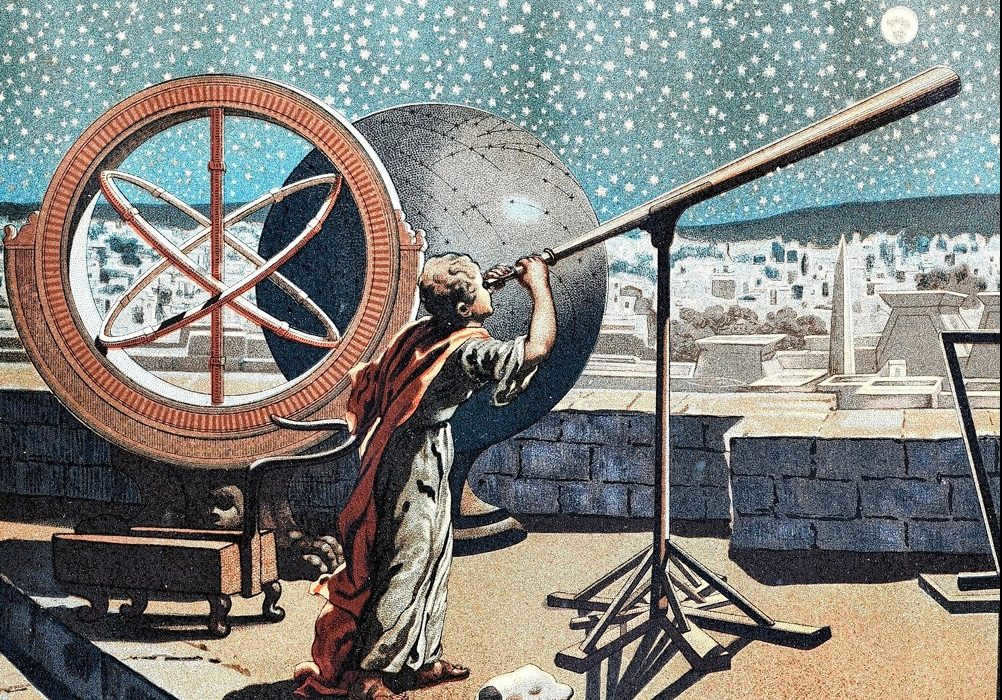
- History of astronomy
Astronomy is an extremely ancient field of study, one of the oldest natural sciences.
For countless millennia, humans have gazed up at the sky, endeavoring to unravel the enigmas of the celestial realms. However, initially, the study of celestial bodies consisted of astronomy (the scientific exploration of their movement and attributes) and astrology (the prognostication of the influence of celestial bodies on Earth and humanity). This remained the case until at least the Renaissance, particularly in Europe.
The earliest recorded astronomical achievements can be traced back to the 31st century B.C. Astronomy progressed autonomously in ancient Greece, Egypt, and Mesopotamia.
Most frequently, the initial astronomers were individuals who combined the roles of philosophers and mathematicians. They were individuals who pondered the mysteries of the celestial sky, contemplating the nature of the universe and the place of humanity within it. These contemplations were often supported by mathematical calculations.
During ancient times, numerous scholars explored the field of astronomy, although not all of their writings have survived and their names have been lost to history. In that era, astronomers relied on primitive and sometimes inaccurate concepts, as they did not yet possess powerful telescopes or advanced theoretical research methods. Nonetheless, these early forays into the realm of astronomy remain intriguing and deserving of our attention.
This article introduces individuals who are rightfully recognized as the pioneers of astronomy, including the aspect that aligns with the contemporary understanding of the Earth’s position in the Universe.
Thales of Miletus
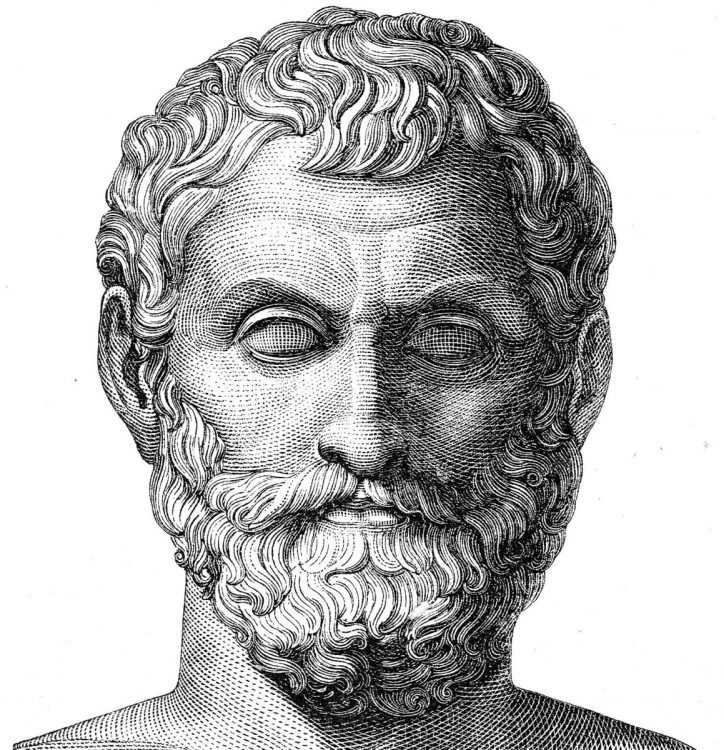
Thales of Miletus (640/624 – 548/545 BC) was an ancient philosopher and mathematician from Greece. It is believed that Thales was the one who first introduced the constellation of the Little Bear as a navigational tool to the Greeks, although it had already been used by the Phoenicians before.
According to researchers, Thales was also the first to observe the inclination of the ecliptic to the equator and divided the celestial sphere into five sections:
- The Arctic Circle;
- The Summer Tropic;
- The Celestial Equator;
- The Winter Tropic;
- The Antarctic Circle.
Thales discovered that the Sun’s size is equal to 1/720th of its circular orbit, while the Moon’s size corresponds to the same fraction of its lunar path.
Thales can be credited with developing a “mathematical approach” to investigating the movement of celestial bodies. He is also known for introducing an Egyptian-inspired calendar, which consisted of 365 days divided into 12 months of 30 days each, with an additional five days left over.
Cleostratus of Tenedos
Cleostratus, hailing from the island of Tenedos, was a renowned figure in ancient times.
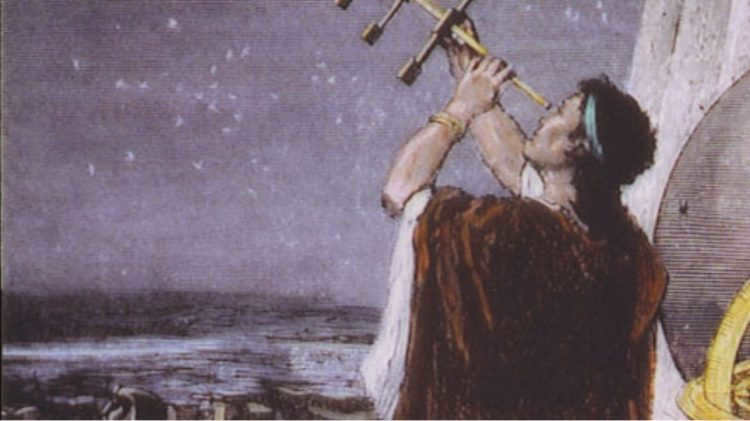
Cleostratus of Tenedos, who lived in the 6th century BC, is credited as the first observational astronomer. According to historical accounts, Cleostratus conducted his observations from Mount Ida on the island of Crete. He is also believed to have composed the poem “Astrology”.
A student of Cleostratus, whose name has not been preserved in history, became the first person in Greece to determine the length of the tropical year, also known as the solar year. The tropical year is the period of time it takes for the Sun to complete one cycle of the seasons as observed from Earth.
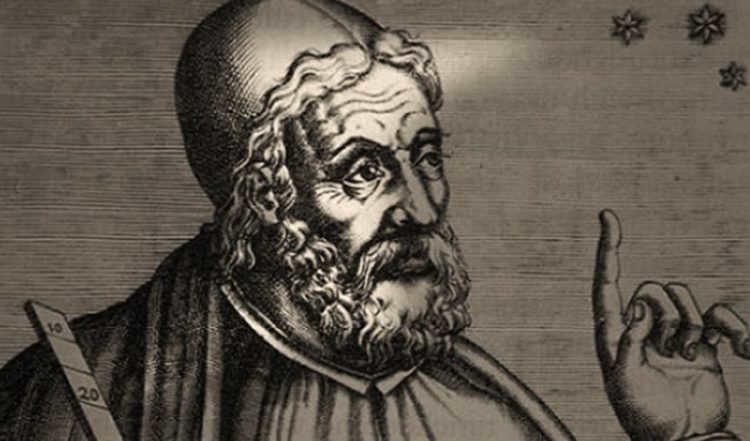
A follower of the philosopher Plato, Eudoxus of Cnidus (408-355 BC), was responsible for establishing the foundations of theoretical astronomy. Eudoxus developed a highly intricate model to explain the motion of the planets, with the exception of Mars. Additionally, he compiled the first catalog of stars in Europe.
The ancient Greeks believed that the sky was composed of solid, transparent spheres arranged at different distances from the Earth’s surface and rotating around it. The celestial bodies, including the stars, were fixed in position on these celestial spheres. The stars, being situated on the outermost sphere, completed a full revolution in exactly one day.
By adjusting the speed of rotation, the relative positions of other spheres, and the angles of inclination of their axes, Eudoxus was able to offer an explanation for the peculiar loops traced by Mars, Jupiter, and Saturn against the backdrop of the stars in the sky.
Later on, Aristotle (384-322 B.C.), the philosopher and scientist, incorporated Eudoxus’ model into his teachings on nature. However, despite any attempts at manipulation, it was clear that this model was not an accurate representation of reality, as the Eudoxus Spheres did not actually exist in the natural world.
Aristarchus of Samos
Aristarchus of Samos, an ancient Greek astronomer and mathematician, was born on the island of Samos in the 3rd century BC. He is best known for his heliocentric model of the universe, in which he proposed that the Earth revolves around the Sun.
Aristarchus was one of the first astronomers to suggest a heliocentric model, centuries before Copernicus. His model was based on observations of the sizes and distances of the Sun, Moon, and Earth. He believed that the Earth and other planets orbit the Sun, and that the stars are fixed in the sky.
Although Aristarchus’ heliocentric model was not widely accepted in his time, it laid the groundwork for future astronomers to explore and develop the concept further. His work was highly influential and served as a catalyst for the scientific revolution that would take place centuries later.
In addition to his work in astronomy, Aristarchus made significant contributions to mathematics. He is credited with developing the first known method for determining the size and distance of the Sun and Moon, known as the Aristarchus’ method.
Aristarchus’ ideas and contributions were not fully appreciated until much later in history. Today, he is recognized as one of the pioneers of modern astronomy and his work continues to inspire and influence scientists and researchers.
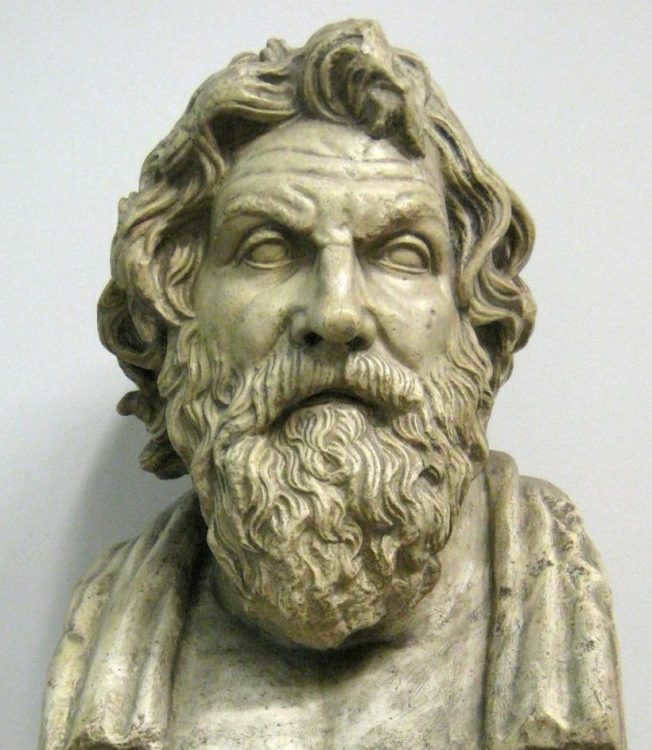
Aristarchus of Samos, the renowned astronomer and philosopher from ancient Greece, was born on the scenic island of Samos in the Aegean Sea. He was among the pioneers who employed geometric calculations to ascertain the dimensions of the Sun and Moon, as well as determine the correlation between their sizes and the paths they traverse. Nevertheless, he did make several errors in his computations, resulting in an estimation of the Sun’s diameter being only six times that of Earth, and the Moon being three times smaller.
Despite being ridiculed by his contemporaries and accused of blasphemy, Aristarchus had the audacity to propose that the Sun is at the center of our planetary system. He accurately explained the phenomenon of day and night on Earth as the result of the Earth’s rotation around its axis, and he even identified the Moon as a satellite of our planet.
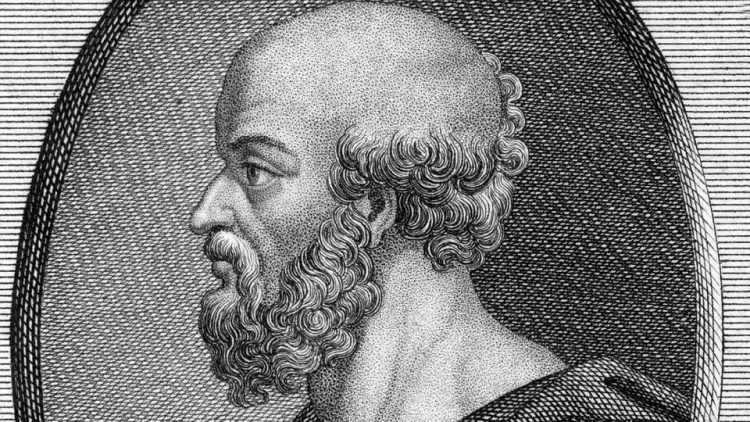
Born in 275 B.C. in Cyrene, Eratosthenes later passed away in 193 B.C. in Alexandria. He was a multifaceted individual, excelling not only in astronomy but also in geography and philosophy. Moreover, Eratosthenes made significant contributions to mathematics. He is credited with inventing a device that allowed for the determination of the precise locations of villages and cities, provided their distances were known in advance. Additionally, Eratosthenes held the esteemed position of overseeing the Library of Alexandria.
One of the most remarkable achievements of Eratosthenes was his ability to calculate the Earth’s circumference. During his investigations, the astronomer observed that on the summer solstice (June 21st), the Sun was directly overhead in the wells of the city of Aswan, while in Alexandria (which was located to the north, but on the same meridian), objects cast a small shadow. Eratosthenes hypothesized that this phenomenon could be explained by the curvature of the Earth’s surface. By measuring the distance between the two cities, the astronomer was able to estimate the radius of the Earth.
Hipparchus of Nicaea
Hipparchus, born in Nicaea, was a well-known Greek astronomer and mathematician.

Hipparchus of Nicaea (161-126 BC) is acknowledged as the pioneer of scientific astronomy. Over the course of numerous years, he conducted star observations and compared them to the findings of Babylonian astronomers. Hipparchus compiled an unparalleled star catalog containing over a thousand stars, and he was the first to introduce the concept of stellar magnitudes, categorizing all stars into six classifications ranging from the brightest to the barely visible. This classification system is still utilized by astronomers today.
The scholar also enhanced the calendar by determining the length of the year as 365.25 days. Additionally, he introduced the notions of apogee (the farthest point in the Moon’s or an artificial satellite’s orbit from the Earth) and perigee (the closest point in the Moon’s or an artificial satellite’s orbit to the Earth), as well as the average time it takes for planets to complete their orbits.
Using the tables created by Hipparchus, it was possible to make incredibly precise predictions about solar and lunar eclipses, something that was unheard of at that time, with an accuracy of up to 1-2 hours.
By the way, it was Hipparchus who first introduced the concept of geographical coordinates, such as latitude and longitude. However, his most significant contribution was the discovery of the shift in celestial coordinates known as the “precession of the equinoxes” (each year, the vernal equinox occurs slightly earlier than the previous year).
Claudius Ptolemy
Claudius Ptolemy was an influential Greek astronomer and geographer who lived in the 2nd century AD. He is best known for his work “The Almagest,” a comprehensive treatise on astronomy that remained the definitive guide in the field for over a thousand years. Ptolemy’s ideas on the structure of the universe were based on a geocentric model, with the Earth at the center and all other celestial bodies revolving around it. Although his theories have since been proven incorrect, Ptolemy’s contributions to the field of astronomy were significant and laid the foundation for future advancements in the field.

Claudius Ptolemy (c. 100 – c. 170) was a renowned astronomer, mathematician, mechanic, optician, and geographer during the late Hellenistic period. He resided and conducted his research in Alexandria, Egypt, where he made significant astronomical observations.
His most influential work, known as “The Great Mathematical Construction” or “Almagest,” served as a fundamental reference for astronomers and mathematicians for over a millennium. This monumental book also included a comprehensive catalog of the celestial objects. However, Ptolemy’s catalog only encompassed the stars visible from his location in Alexandria, and it did not cover the entire celestial sphere. Ptolemy’s geocentric model of the universe was widely accepted in both Western and Arab civilizations until it was superseded by the heliocentric system proposed by Nicolaus Copernicus.
By devising this system, he demonstrated his adeptness as a mechanic, as he could envision the non-uniform movements of the celestial objects as a synthesis of various uniform movements along circular paths.
Interestingly, Ptolemy’s system did not correspond to the true nature of the universe, but it provided a means to accurately forecast the motion of celestial bodies, the occurrence of solar and lunar eclipses, and the simultaneous presence of all the planets in the Earth’s atmosphere.
Nicolaus Copernicus
Nicolaus Copernicus was a Polish astronomer who revolutionized our understanding of the universe. He is best known for his heliocentric model of the solar system, which placed the Sun at the center with the planets, including Earth, revolving around it. This was a radical departure from the prevailing geocentric model, which held that Earth was the center of the universe.
Copernicus was born in 1473 in the city of Toruń, in what is now Poland. He studied mathematics and astronomy at the University of Kraków and later continued his studies in Italy. It was during this time that he began to question the geocentric model and develop his own heliocentric theory.
Copernicus’ heliocentric model, outlined in his book “De Revolutionibus Orbium Coelestium” (“On the Revolutions of the Celestial Spheres”), was a groundbreaking scientific theory. It not only challenged the prevailing beliefs of the time but also laid the foundation for modern astronomy. His model provided a more accurate explanation for the observed motions of the planets and stars and helped to resolve many long-standing astronomical problems.
Despite the significance of his work, Copernicus was cautious in sharing his heliocentric theory. He feared the backlash from the Catholic Church, which held the geocentric model as a fundamental truth. It wasn’t until the year of his death, in 1543, that “De Revolutionibus Orbium Coelestium” was published.
Copernicus’ contributions to science and astronomy have had a lasting impact on our understanding of the universe. His heliocentric model paved the way for future astronomers and laid the groundwork for the scientific revolution that would follow. Today, he is remembered as one of the most influential figures in the history of science.
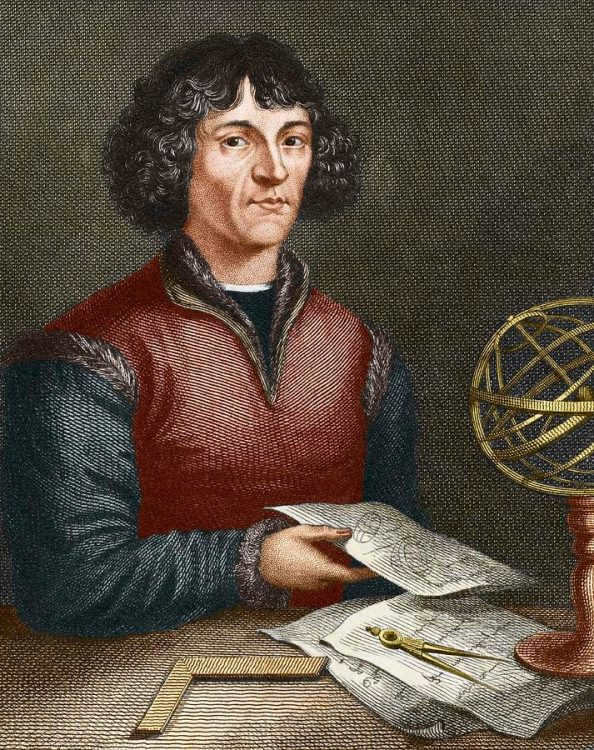
Nicolaus Copernicus was an astronomer from Poland. He was born on February 19, 1473, in the city of Torun and passed away in Frombork on May 24, 1543. Copernicus attended the universities of Krakow, Bologna, and Padua, where he studied various sciences, including astronomy. In 1512, he became a canon at Frombork and devoted himself to his duties, as well as to observing and studying the universe.
He is most famous for his work on the heliocentric world system, which marked the beginning of the first scientific revolution.
Copernicus’ primary and nearly exclusive achievement, “On the Rotation of the Celestial Orbs,” was released in 1543. It discusses the spherical essence of the universe and the Earth, and in place of asserting the Earth’s immobility, it introduces a new axiom: the Earth, along with the other planets, orbits on an axis and revolves around the Sun. Despite being banned by the church, his work managed to be published shortly before the astronomer’s demise.
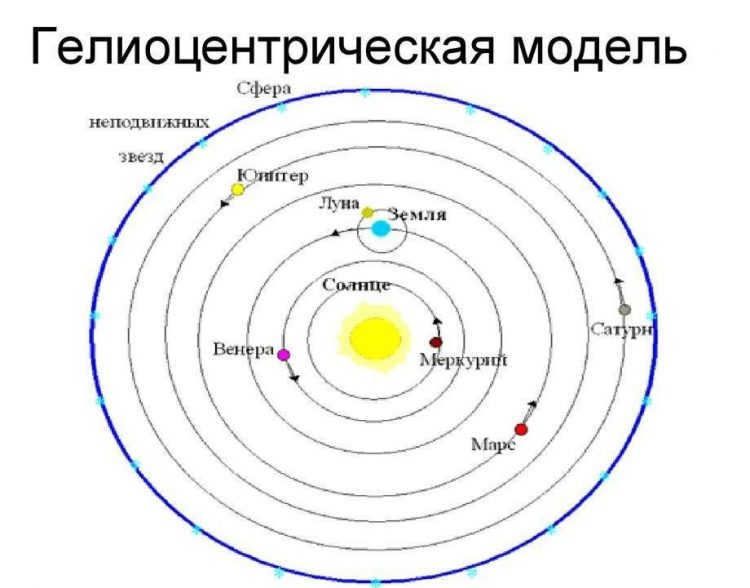
Copernicus explains the return motion of the planets through heliocentric positions. He provides information on spherical trigonometry and the rules for calculating the apparent positions of the stars, planets, and the Sun in the sky. He also discusses the Moon, planets, and the factors that cause changes in the latitudes of the planets.
The Copernican version of the heliocentric system can be summarized in seven statements:
- Orbits and celestial spheres do not share a common center.
- The center of the Earth is not the center of the Universe, but only the center of mass and orbits of the Moon.
- All planets move in orbits with the Sun as their center, making the Sun the center of the world.
- The apparent movement of the Sun is not real, but rather a result of the Earth’s rotation. The Earth completes one rotation in 24 hours, causing the Sun to appear to move across the sky. This rotation also keeps the Earth’s axis parallel to itself.
- In reality, it is the Earth (along with the Moon and other planets) that revolves around the Sun. The Sun’s perceived movements, such as its daily journey and its yearly path through the Zodiac, are simply a consequence of the Earth’s motion.
- By understanding the motion of the Earth and other planets, we can explain their positions in space and the unique characteristics of their movements.
Tycho Brahe
Tycho Brahe was a Danish nobleman and astronomer who made significant contributions to the field of astronomy during the 16th century. He was born on December 14, 1546, in Knutstorp, Denmark, and died on October 24, 1601, in Prague, Bohemia.
Brahe’s most notable achievement was his extensive and accurate observations of the stars and planets. He built and operated a series of observatories, including Uraniborg and Stjerneborg, where he meticulously recorded the positions of celestial objects. These observations helped to refine the understanding of the solar system and laid the groundwork for future discoveries.
In addition to his observational work, Brahe also developed a hybrid model of the solar system that combined elements of the heliocentric and geocentric models. According to his model, the planets orbited the sun, while the sun and moon orbited the Earth. This model, known as the Tychonic system, was widely accepted during Brahe’s time and influenced subsequent astronomers.
Brahe’s contributions to astronomy were recognized and celebrated during his lifetime. He received patronage from several influential figures, including King Frederick II of Denmark and Emperor Rudolph II of the Holy Roman Empire. His observations and data were also used by other astronomers, including his assistant Johannes Kepler, who used them to develop his laws of planetary motion.
Tycho Brahe’s legacy continues to have a lasting impact on the field of astronomy. His meticulous observations and accurate data laid the foundation for future discoveries and helped to shape our understanding of the universe.
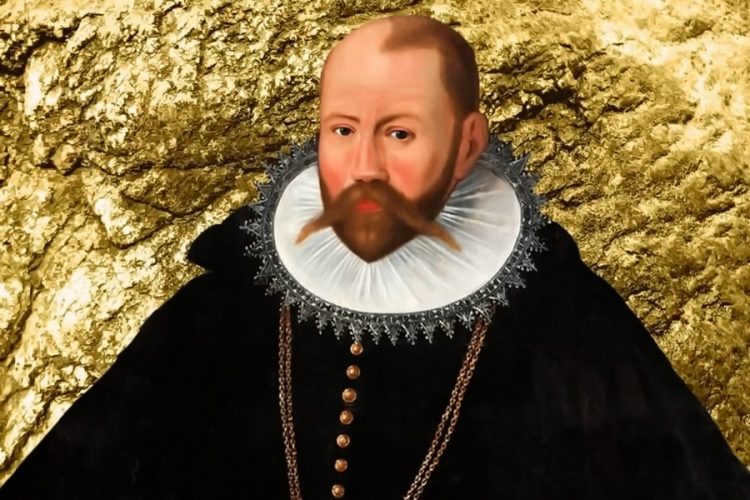
Tycho Brahe (14.12.1546-24.10.1601) was a Danish astronomer during the Renaissance period. He was the pioneer in Europe for conducting comprehensive and exceptionally precise observations of celestial bodies, which later led to the development of Kepler’s laws of planetary motion.
In November 1577, a luminous comet became visible in the sky. Tycho Brahe diligently tracked its path until it vanished from sight in January 1578. Upon comparing his collected data with that of his peers from various observatories, he reached an indisputable conclusion: comets are not atmospheric phenomena, as previously believed by Aristotle, but rather extraterrestrial objects located three times farther away than the Moon.
Brahe presented his scientific accomplishments in a comprehensive astronomical treatise spanning multiple volumes. The initial volume focused on the world system devised by Tycho Brahe and the comet observed in 1577. The first volume, which discussed the supernova seen in 1572, was published at a later date in 1592, albeit in an unfinished state. Following Brahe’s death in 1601, Johannes Kepler released the final edition of this volume in 1602. Brahe had intended to delve into the motion of other comets, the Sun, the Moon, and the planets in subsequent volumes, but he unfortunately did not have the opportunity to bring this plan to fruition.
Johannes Kepler: A Unique Figure in the History of Science
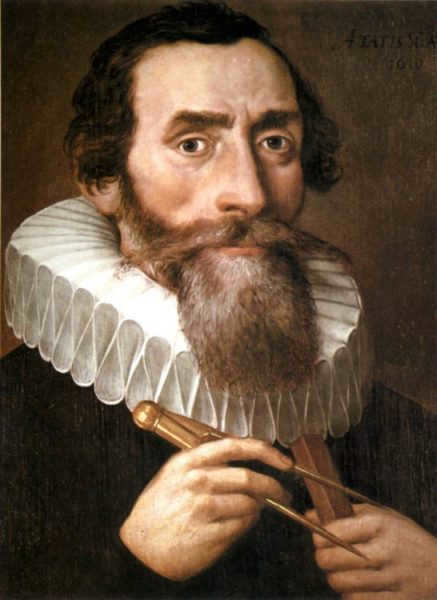
Johannes Kepler (27.12.1571-15.11.1630) was a German mathematician, astronomer, mechanic, optician, and the discoverer of the laws governing the motion of planets in the solar system. Kepler revolutionized the study of the solar system by creating a new model of telescope that greatly enhanced our understanding of it.
In the late 16th century, astronomy was in a state of flux, torn between Ptolemy’s geocentric system and Copernicus’s heliocentric system. However, Kepler’s three laws of planetary motion provided a comprehensive and highly accurate explanation for the seemingly irregular motions of the planets.
As per Kepler’s laws, the movement of all planets is in the shape of an ellipse. The Sun is located at one of the foci of these ellipses. The speed of the planet’s orbit varies depending on its distance from the Sun. Kepler conducted a 10-year study on the orbit of Mars to formulate his laws.
Additionally, Kepler developed the “Kepler equation,” which is utilized in astronomy for calculating the positions of celestial bodies.
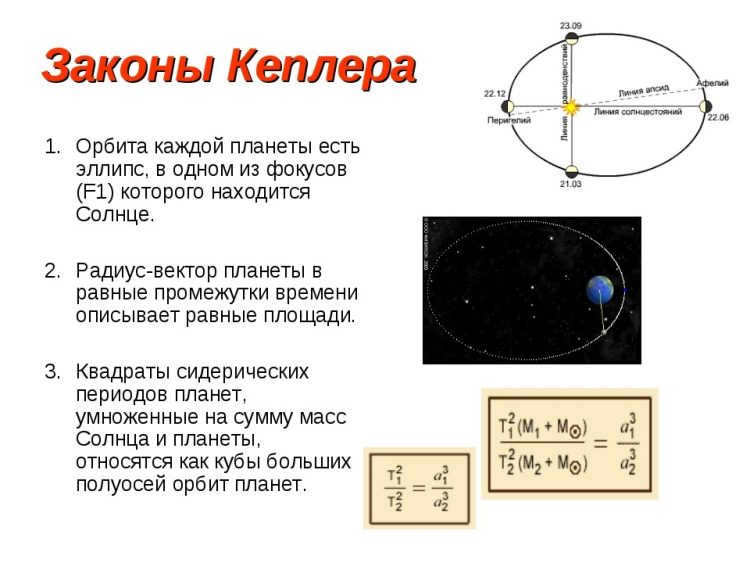
Newton’s theory of gravitation was built upon the laws of planetary kinematics discovered by Kepler. Kepler wrote a comprehensive three-volume account of Copernican astronomy (1617-22), which was immediately banned and placed on the Index of Prohibited Books. In this groundbreaking work, Kepler detailed all of his astronomical discoveries.
In 1627, after 22 years of dedicated work, Kepler published his astronomical tables. These tables were in high demand, as previous tables had become outdated. Additionally, for the first time, Kepler’s tables included logarithms for convenient calculations. Astronomers and sailors relied on Kepler’s tables until the early 19th century.
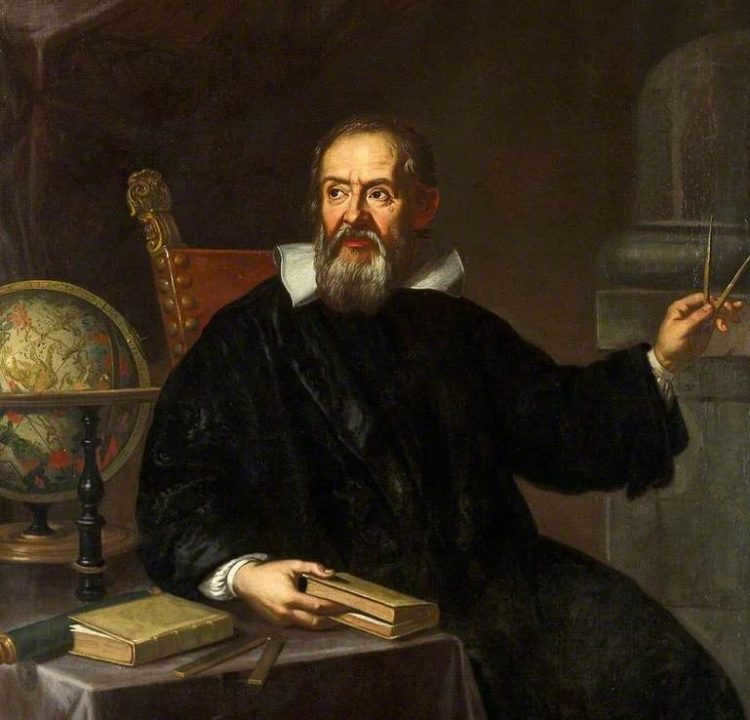
Galileo Galilei – Galileo Galilei, a renowned Italian mathematician, physicist, and astronomer, made a profound contribution to the scientific field during his era. Born on February 15, 1564, in Pisa, he passed away on January 8, 1642, in Florence. Among his notable achievements are the revelation of the pendulum’s laws of motion, the invention of hydraulic scales, and the creation of the gas thermometer.
In 1609, Galileo constructed his initial telescope using a convex lens and concave eyepiece. The tube provided an approximate magnification of three times. He quickly managed to create a telescope that offered a magnification of 32 times. It was Galileo who introduced the term “telescope” into the scientific community. On January 7, 1610, Galileo made his first telescopic observations of celestial bodies. These observations revealed that the Moon, similar to the Earth, possesses a complex topography. Galileo explained the moon’s ashy light as the result of sunlight reflected by the Earth striking our natural satellite.
Galileo refuted one of the arguments put forth by opponents of heliocentrism: the Earth cannot revolve around the Sun, as the Moon itself revolves around it.
Galileo made a groundbreaking discovery of sunspots and conducted extensive studies on the planets in our solar system. He also calculated the rotation period of the Sun and came to the conclusion that the stars are located at vast distances from our planet. In fact, he famously asserted that the universe is infinite. Additionally, Galileo was able to provide evidence that the Milky Way is not simply a cloud, but rather a collection of countless stars.
However, Galileo’s strong belief in the Copernican theory, which placed the Sun at the center of the universe, resulted in a conflict with the Church. This conflict ultimately led to Galileo being brought to court in 1632. Faced with a desperate situation, Galileo was forced to publicly renounce his beliefs. Despite being under house arrest and suffering from partial blindness, Galileo continued his scientific work with the help of his students.
Edmund Halley
can be rephrased as
Edmund Halley, the famous astronomer
.
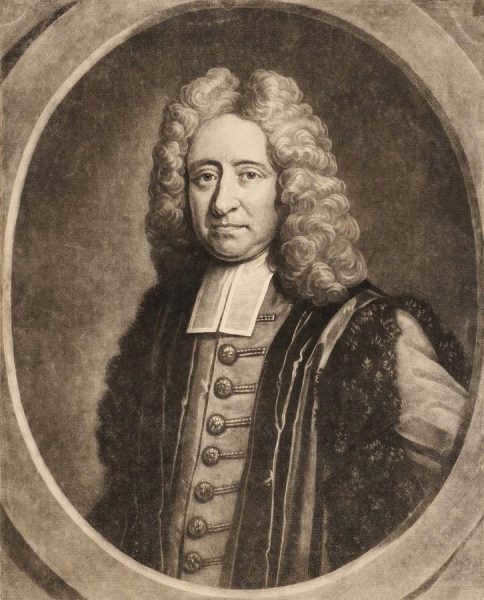
Edmund Halley (29.10.1656-14.01.1742) was a renowned British astronomer, physicist, mathematician, and demographer. As early as 1676, during his third year at Oxford University, Halley published his inaugural scientific paper titled “On the Orbits of the Planets,” through which he unveiled the remarkable inequality between Jupiter and Saturn. Another significant contribution of his was the publication of The Catalog of the Southern Skies, an extensive compilation that encompassed detailed information on 341 stars located in the Southern Hemisphere.
In the year 1693, Halley made a groundbreaking discovery regarding the secular acceleration of the Moon, which strongly suggested its gradual approach towards Earth. Furthermore, in 1677, he proposed a novel technique for gauging the distance between the Earth and the Sun, commonly referred to as the astronomical unit. This method necessitated the careful observation of Venus traversing the Sun’s surface from two distinct locations situated at varying latitudes.
By the end of the 19th century, Halley’s method had reduced the error in determining the solar parallax by 25 times.
The name of Edmund Halley was also associated with a significant shift in our understanding of comets. Prior to Newton, they were considered to be foreign wanderers that only passed through the solar system on parabolic orbits that were not closed. In 1705, Halley calculated and published the orbits of 24 comets, noting the similarity in orbital parameters between several of them observed in the 16th and 17th centuries and the comet observed in 1682.

Photograph of Halley’s Comet in 1986 taken from the Earth
In 1716, he published detailed calculations that indicated this comet was the same one, and its next appearance was predicted to occur at the end of 1758. As predicted, it was discovered. The comet’s return on the expected date was the first successful validation of Newton’s theory of gravitation and brought fame to Halley himself. This comet is now commonly referred to as Halley’s Comet.
Due to his exceptional accomplishments, Halley was awarded the title of Master of Astronomy at Oxford and was granted membership to the Royal Society of London.
Halley was the first to capture the interest of astronomers with a puzzling phenomenon known as nebulae. In his 1715 publication, he boldly proposed that these cosmic entities were abundant and emitted their own light.
Mikhail Lomonosov

Mikhail Lomonosov (08.11.1711 – 04.04.1765) – the initial Russian natural scientist of global significance, encyclopedist, chemist, and physicist. In the field of astronomy, he gained recognition for his discovery of the atmosphere of the planet Venus. This breakthrough occurred on May 26, 1761, during his observation of Venus passing across the solar disk.
The scientist conceived and constructed several revolutionary optical devices, establishing the Russian school of scientific and applied optics. M. V. Lomonosov invented a cathoptric-dioptric incendiary system and a contraption known as a “night-vision tube” for enhancing light density, enabling the viewing of distant objects at sea during the night. Lomonosov, well-versed in the telescopes devised by I. Newton and D. Gregory, proposed his own unique design.
In April 1762, under the guidance of MV Lomonosov, a prototype of the new telescope was created, and on May 13, the scientist presented it during a meeting of the Academic Assembly. However, this groundbreaking invention remained unknown to the public until 1827. It was not until then that a similar enhancement of the telescope was suggested by W. Herschel, leading to the system being referred to by his name.
William Herschel
William Herschel, born Friedrich Wilhelm Herschel, was a German-born British astronomer and musician. He is best known for discovering the planet Uranus in 1781. Herschel was born in 1738 in Hanover, Germany, and later moved to England in 1757. Besides his astronomical work, he was also a talented musician and composer, serving as the director of music for the city of Bath in England. Herschel made many important contributions to astronomy, including the discovery of infrared radiation and the cataloging of thousands of nebulae and double stars. He was a pioneer in the field of telescopes and made significant advancements in their design and construction. Herschel’s discoveries and contributions continue to have a lasting impact on our understanding of the universe.
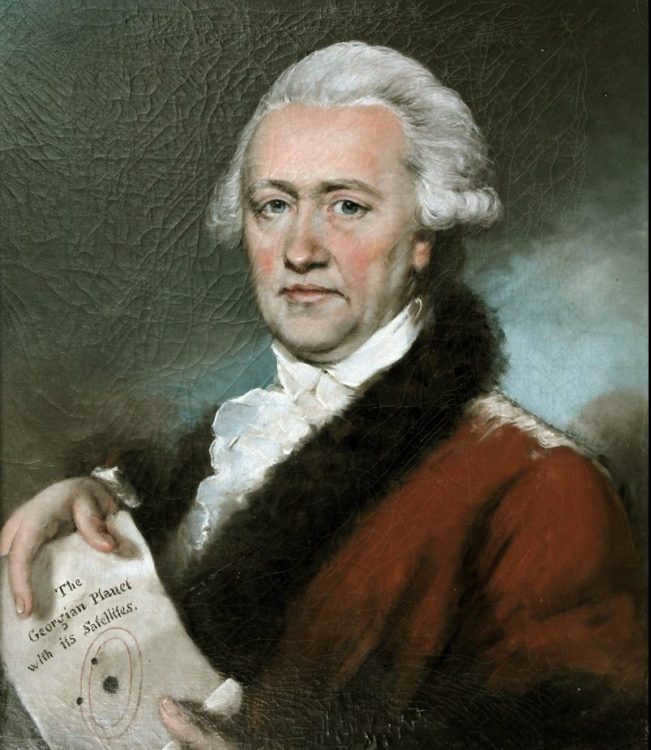
The great English scientist of German descent, William Herschel, played a significant role in the advancement of astronomy. He constructed groundbreaking reflectors, featuring mirrors with diameters of up to 1.2 meters, and skillfully utilized them.
Herschel made numerous important discoveries, including the identification of Uranus as the seventh planet and the observation of its satellites rotating in the opposite direction. He also discovered several satellites of Saturn, observed seasonal changes in the polar caps of Mars, interpreted the stripes and spots on Jupiter as clouds, measured the rotation period of Saturn and its rings. Additionally, he determined that the entire solar system moves towards the constellation of Hercules, detected the presence of infrared rays in the Sun’s spectrum, and established a correlation between solar activity (as indicated by the number of sunspots) and earthly processes.
He made records of more than 2500 new nebulae. His research focused on their structure and interactions. Nebulae that had a round shape, sometimes with a star inside, were referred to as planetary nebulae, as he believed they were clusters of diffuse matter where a star and a planetary system were formed. In reality, the majority of the nebulae he discovered turned out to be galaxies, but the scientist’s fundamental understanding was correct – the process of star formation continues to this day.
Some of Herschel’s findings were disregarded, and it was not until the 20th century that interacting galaxies were rediscovered.
Herschel was the first to systematically employ statistical methods in astronomy and utilized them to determine that the Milky Way is an isolated cluster of stars with a finite number of stars, and it has a flattened shape. He estimated that the distances to nebulae were millions of light years away.
Video
can be paraphrased as
Visual presentation
Often, when we gaze at the starry expanse above, we find ourselves pondering the contents of this boundless realm.
Within the vast cosmos lie a multitude of enigmas and conundrums, yet there exists a discipline known as astronomy, which has diligently scrutinized the celestial domain for countless years, endeavoring to unravel its genesis. What, then, is this field of study? What precisely do astronomers engage in and what specific facets do they explore?
What is the definition of the term “astronomy”?
The word “astronomy” originated in ancient Greece during the III-II centuries BC, when notable scientists like Pythagoras and Hipparchus were prominent in the scientific community. It is a combination of two ancient Greek words – ἀστήρ (star) and νόμος (law), thus indicating that astronomy is the study of the laws governing the stars.
It is important to note that astronomy should not be confused with astrology, which focuses on the examination of how celestial bodies affect the Earth and human beings.
Astronomy is a branch of science that focuses on studying the universe, specifically the position, structure, and origins of celestial bodies. In contemporary times, it encompasses various subdivisions:
– Astrometry, which investigates the position and movement of cosmic entities;

– Celestial mechanics is the field of study that focuses on determining the mass and shape of stars, as well as investigating the laws that govern their movement under the influence of gravitational forces. This branch of astronomy utilizes various mathematical and computational techniques to analyze and predict the celestial bodies’ motions.
– Theoretical astronomy is another branch of the field, where scientists develop analytical and computer models to understand and explain phenomena related to celestial bodies. This involves studying the properties and behavior of stars, galaxies, and other cosmic objects using theoretical frameworks and simulations.
– Astrophysics is a specialized branch of astronomy that specifically examines the chemical and physical properties of cosmic objects. It involves studying the composition, structure, and processes occurring within stars, galaxies, and other celestial bodies to gain insights into their nature and behavior.
These different branches of astronomy collectively contribute to our understanding of the spatial arrangement of stars and planets in the Universe, as well as the evolutionary processes that shape celestial bodies over time.
In the 20th century, a new branch of astronomy called archaeoastronomy emerged. This branch focuses on investigating the historical aspects of astronomy and understanding the knowledge of ancient civilizations regarding stars.
What is the subject of study in astronomy?

The field of astronomy focuses on the entirety of the cosmos and its various components, such as stars, planets, asteroids, comets, galaxies, and constellations. Astronomers delve into the study of interplanetary and interstellar matter, the concept of time, enigmatic black holes, captivating nebulae, and the intricate celestial coordinate systems. In essence, they diligently examine all aspects pertaining to space and its evolution, which includes the analysis of astronomical instruments, symbols, and observatories.
Astronomy, one of the oldest sciences known to mankind, has a mysterious origin that cannot be pinpointed to an exact date. However, it is widely recognized that the study of celestial bodies, particularly the stars, has been a subject of fascination for humans since the VI-IV millennia BC.
The knowledge and wisdom of ancient civilizations, such as the priests of Babylon, the calendars of Maya tribes, Ancient Egypt, and Ancient China, have been preserved through their astronomical tables. Furthermore, the Ancient Greek scientists played a crucial role in the advancement of astronomy and the exploration of celestial luminaries. Notably, Pythagoras was the first to propose the notion that our planet possesses a spherical shape, while Aristarchus of Samos was the pioneer in deducing its rotation around the Sun.
For a considerable period, the field of astronomy was closely intertwined with astrology. However, with the onset of the Renaissance, it gradually evolved into an independent scientific discipline. The introduction of telescopes played a pivotal role in this transformation, allowing scientists to observe and study celestial phenomena in unprecedented detail. It was during this time that the existence of the Milky Way galaxy was first discovered, leading to the realization that our universe is composed of countless galactic regions.
One of the most significant breakthroughs in recent history has been the development of the theory of the Universe’s evolution. According to this theory, the Universe is constantly expanding and changing over time, a concept that has revolutionized our understanding of the cosmos.
What does amateur astronomy mean?


